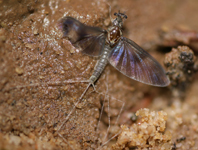Abstract
The tussock moth genus Daplasa Moore, 1879 is reviewed from China. Hitherto four species are recognized, where one new species, D. nivisala sp. n., is described and one new combination D. melanoma (Collenette, 1938) comb. n. is proposed. Adults and their genital structures are provided, together with a key to the species of Daplasa with the occurrence in China.
References
Ashton, L.A., Nakamura, A., Burwell, C.J., Tang, Y., Cao, M., Whitaker, T., Sun, Z., Huang, H. & Kitching, R.L. (2016) Elevational sensitivity in an Asian ‘hotspot’: moth diversity across elevational gradients in tropical, sub-tropical and sub-alpine China. Scientific Reports, 6, 26513.
https://doi.org/10.1038/srep26513
Chao, Z.L. (1985) A new species of Daplasa Moore (Lepidoptera: Lymantriidae). Acta Entomologica Sinica, 28 (2), 223–224.
Chao, Z.L. (2003) Lepidoptera Lymantriidae. Fauna Sinica, Insecta 30. Science Press, Beijing, 484 pp.
Collenette, C.L. (1934) The Lymantriidae of Kwang-Tung (S.E. China). Novitates Zoologicae, 39, 137–150.
Collenette, C.L. (1938) On a collection of Lymantriidae (Heterocera) from China. Proceedings of the Royal Entomological Society of London (B), 7 (10), 211–221.
https://doi.org/10.1111/j.1365-3113.1938.tb01230.x
Holloway, J.D. (1999) The moths of Borneo (part 5): family Lymantriidae. Malayan Nature Journal, 53, 1–188.
Holt, B.G., Lessard, J.P., Borregaard, M.K., Fritz, S.A., Araújo, M.B., Dimitrov, D., Fabre, P.H., Graham, C.H., Graves, G.R., Jønsson, K.A., Nogués-Bravo, D., Wang, Z., Whittaker, R.J., Fjeldså, J. & Rahbek, C. (2013) An Update of Wallace’s Zoogeographic Regions of the World. Science, 339, 74–78.
https://doi.org/10.1126/science.1228282
Leech, J.H. (1899) Lepidoptera Heterocera from China, Japan and Corea. Transactions of the Entomological Society of London, 1899, 99–219.
https://doi.org/10.1111/j.1365-2311.1899.tb03304.x
Moore, F. (1879) Descriptions of new Indian Lepidopterous Insects from the collection of the late Mr. W. S. Atkinson. Heterocera Part I. Taylor & Francis, London, 88 pp.
Myers, N., Mittermeier, R.A., Mittermeier, C.G., da Fonseca, G.A.B. & Kent, J. (2000) Biodiversity hotspots for conservation priorities. Nature, 403, 853–858.
https://doi.org/10.1038/35002501
Swinhoe, C. (1923) A revision of the genera of the family Liparidae. Annals and Magazine of Natural History, 11, 47–97.
https://doi.org/10.1080/00222932308632827
Wang, H.S., Wahlberg, N., Holloway, J.D., Bergsten J., Fan X.L., Janzen, D.H., Hallwachs, W., Wen, L.J., Wang, M. & Nylin, S. (2015) Molecular phylogeny of Lymantriinae (Lepidoptera, Noctuoidea, Erebidae) inferred from eight gene regions. Cladistics, 31 (6), 579–592.
https://doi.org/10.1111/cla.12108
Wang, H.S., Fan, X.L., Owada, M., Wang, M. & Nylin, S. (2014) Phylogeny, systematics and biogeography of the genus Panolis (Lepidoptera: Noctuidae) based on morphological and molecular evidence. PLoS ONE, 9 (3), e90598.
https://doi.org/10.1371/journal.pone.0090598
Wang, H.S, Xiong, W. & Wang, M. (2010) Two new species of the genus Longipenis (Lepidoptera: Lecithoceridae) from China. Florida Entomologist, 93 (3), 352–356.
https://doi.org/10.1653/024.093.0305

